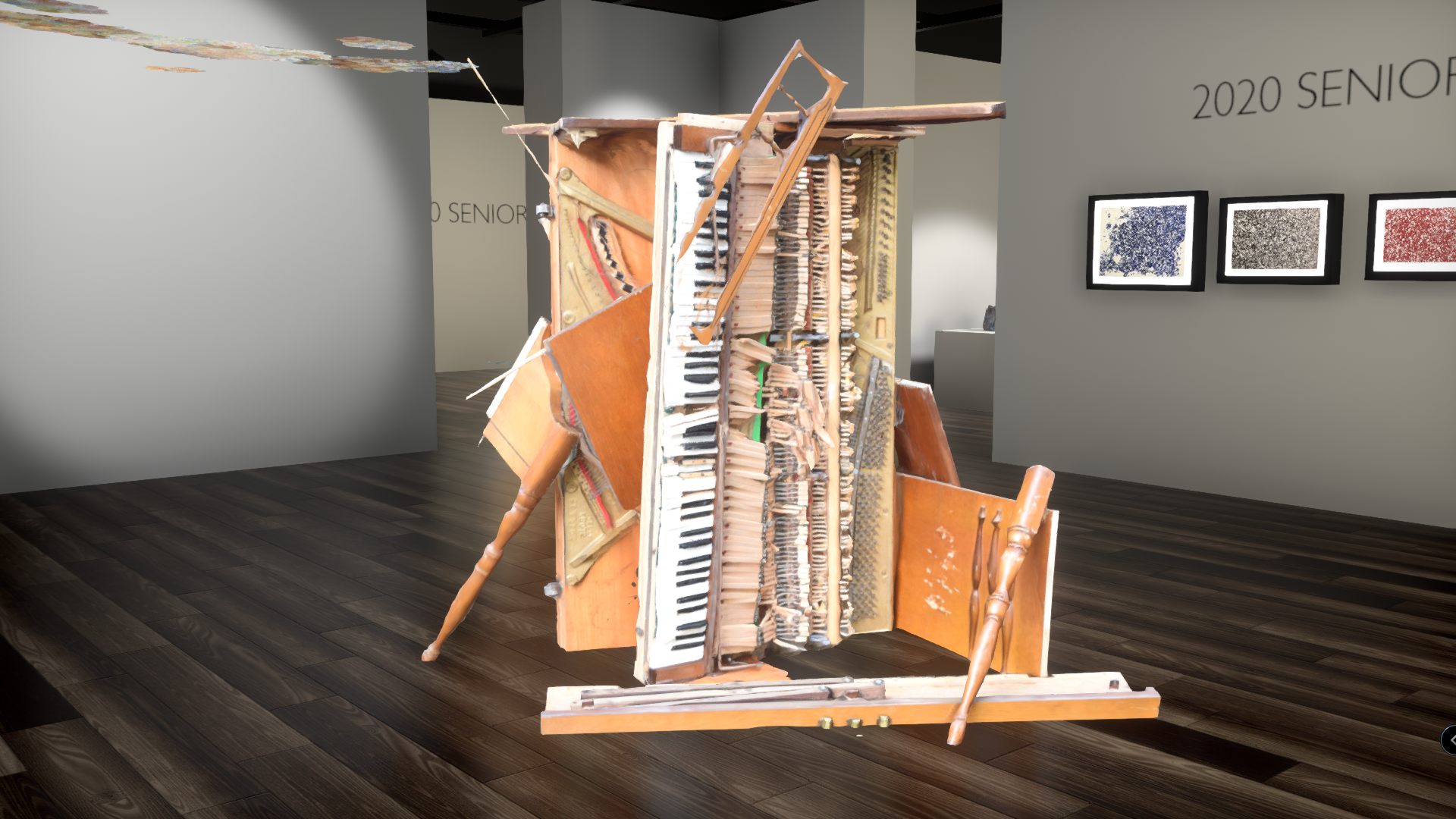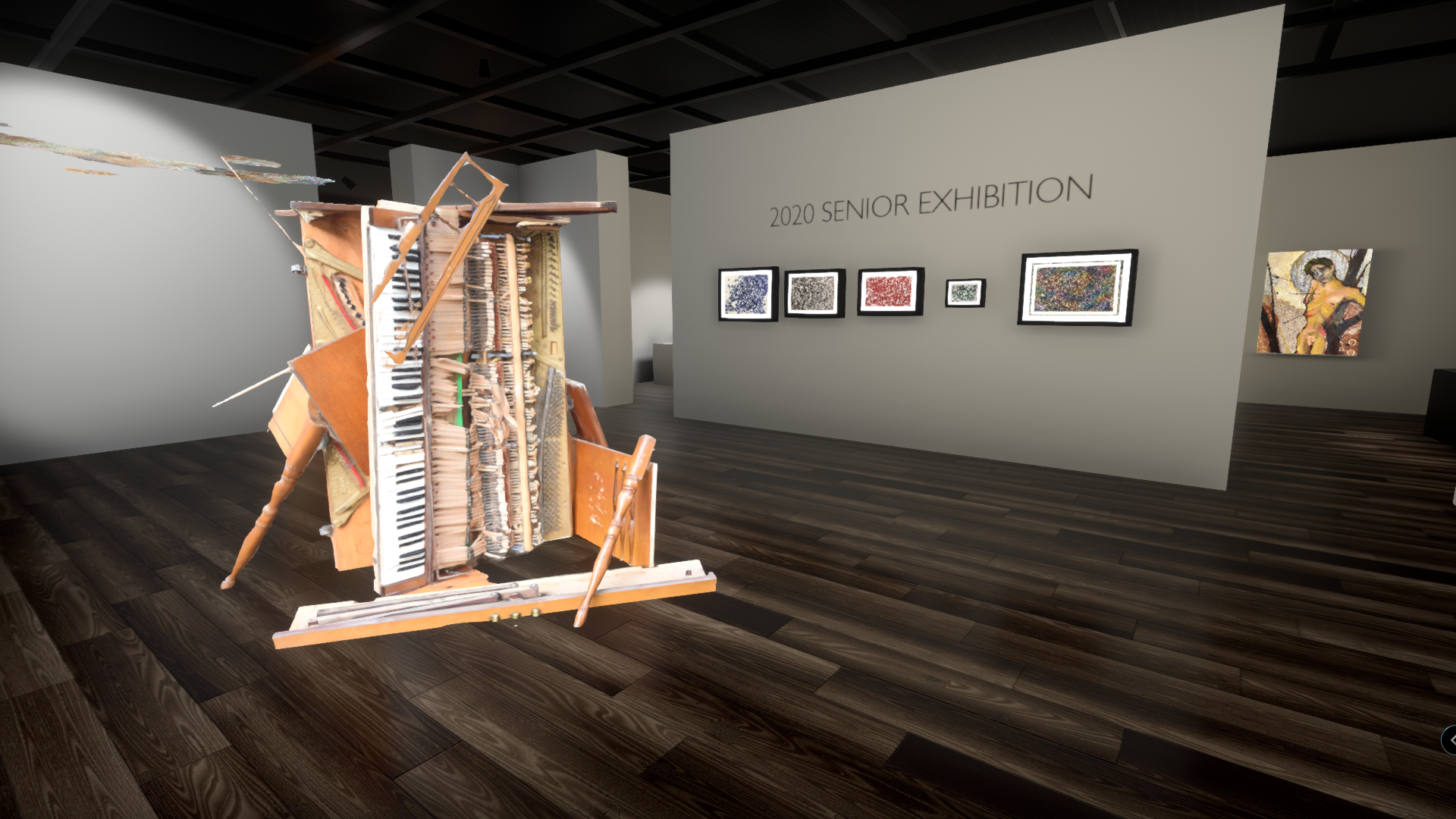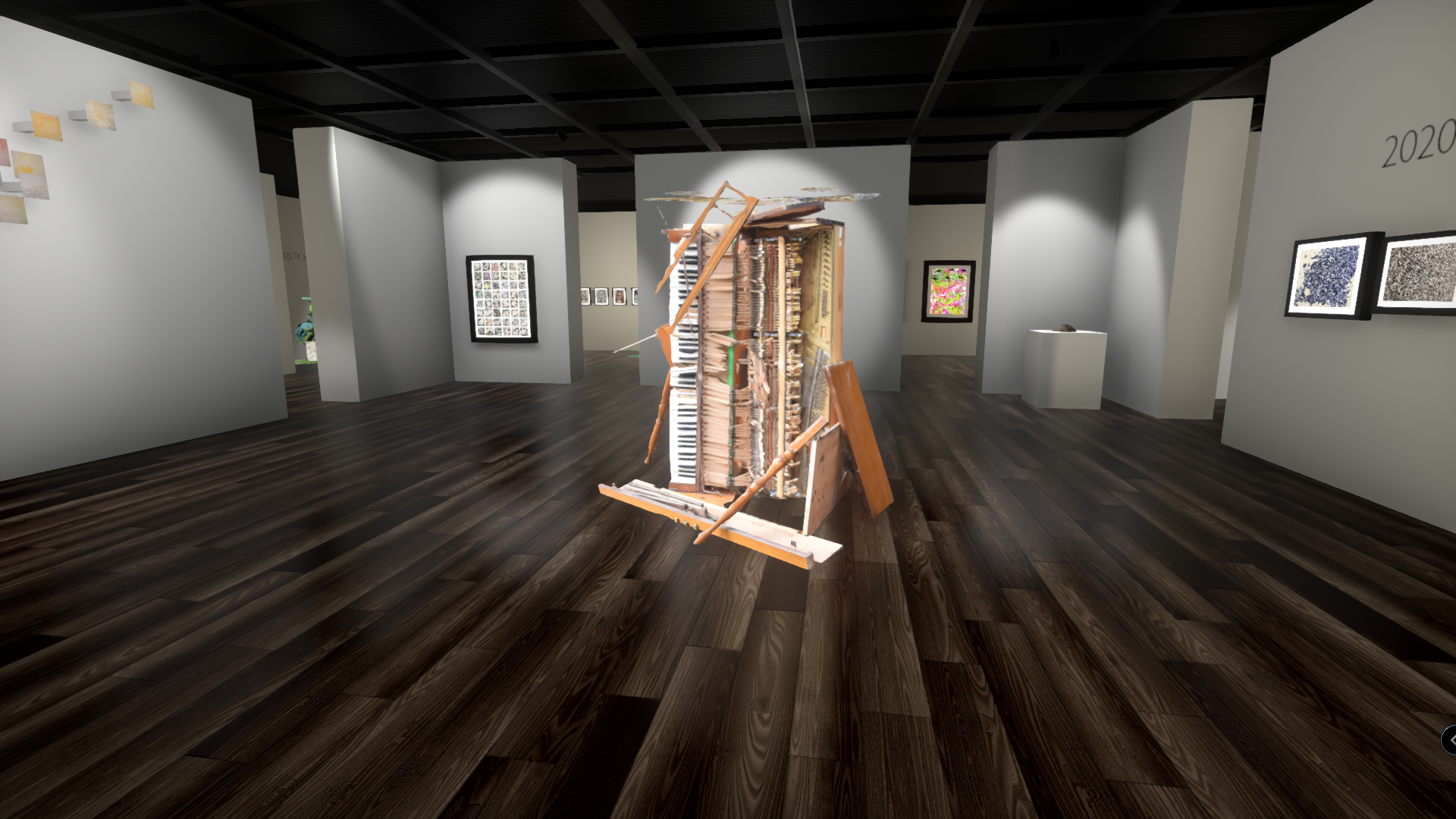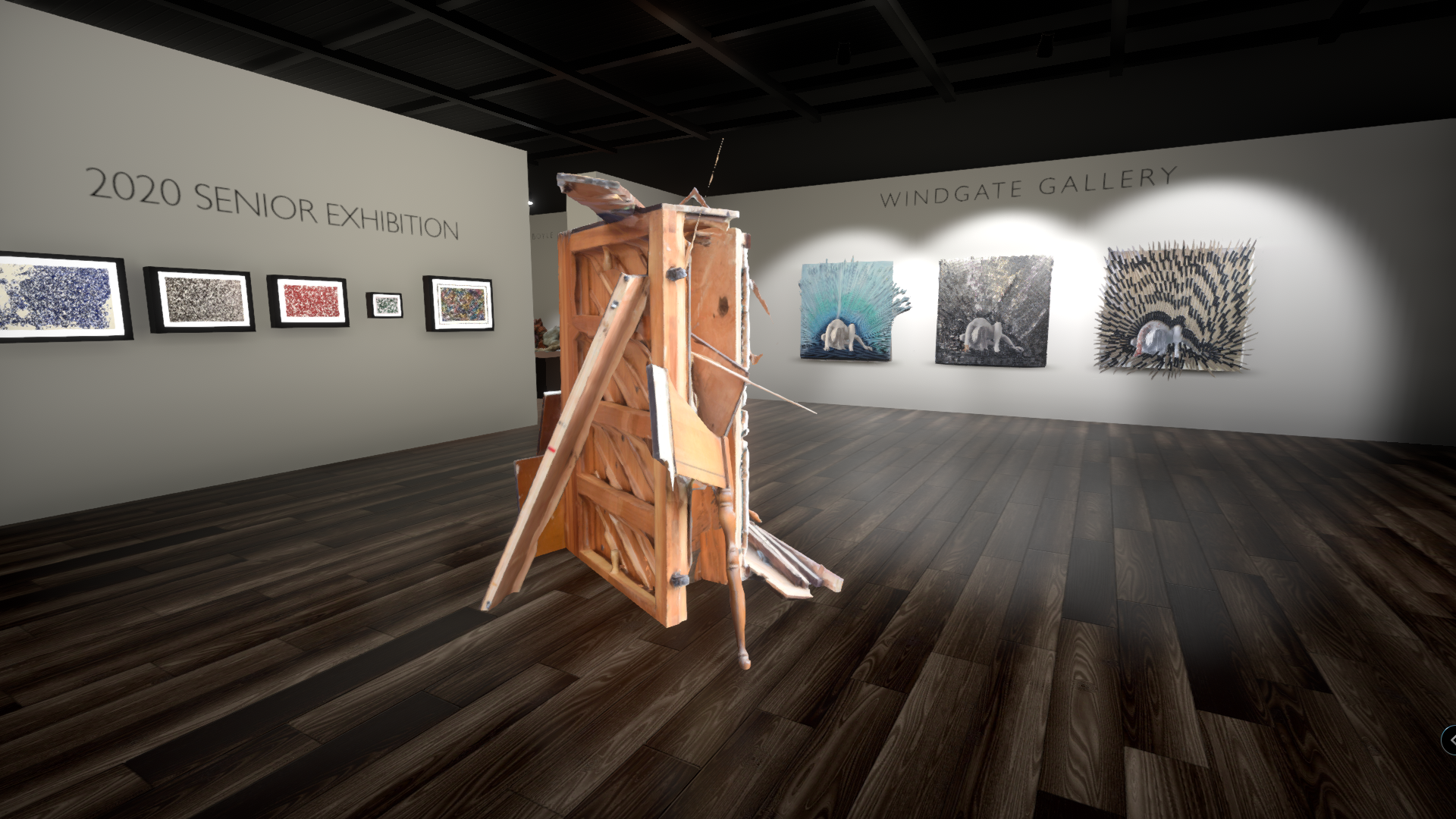Easton Reese Adams is an artist from Jonesboro, Arkansas who specializes in sculpture and digital art. He has exhibited his work across the Arkansas State University campus, where he will soon earn a Bachelor of Fine Arts with an emphasis in sculpture. After graduation, he intends to seek a Master of Fine Arts where he will challenge the boundaries of traditional artistic styles and themes; questioning the way and the reasons art is made.
“As an artist, I’m trying to develop what exactly my definition of art is and what making art means to me, and by trying various styles and techniques, I can hopefully obtain a better understanding of what that definition is. Many of my works deal with opposing themes and ideas in art that question if one idea should be used over the other. I try to base my work in a variety of media so that a wider range of ideas that I have learned throughout my education can be incorporated. Influencing styles, ideas, and periods on my work are Pop Art, Modernism, Post-Modernism, Dada, Conceptual Art, and the Contemporary. I hope to further my growth as an artist by exploring and experimenting with new and unique ideas when it comes to making meaning, thought-provoking pieces.”
Death of a Piano
Easton Adams, Cade Cockrell
This sculpture displays the aftermath of the destruction of an innocent piano. It previously was on display, unharmed, in the Arkansas State University library, where several students would sit down and play a quick piece. The sound would be projected all around and up to the ceiling in the large space that made up the entrance to the library. The music was nice to hear.
Following the weekend of its first week being on display, students came back to school to find the piano torn to pieces, unable to make a pleasant sound ever again. Many were surprised and taken aback by what they were seeing. How could someone do that to such a lovely and beautiful instrument?
This piece didn’t just intend to use a form of shock value to affect the viewer. It went one step further in asking when and how can destruction be used in art to invoke meaning and emotion. Methods like stone sculpting and wood carving use forms of destruction during their processes, as well as pottery. This work inquires how exactly taking away material instead of adding it changes the way an artwork can be viewed and evaluated.





Mug*
At first glance, you may think this is just a lump of clay and not a mug as the title suggests, and you’d be right......and you’d be wrong too.
For a work of art, when is it finished? Does the first brush stroke establish the existence of a painting? Does the last brush stroke establish the end of the creative process? It could be said that the painting is never finished. The artwork could be in a dynamic state of being the art at every state in the process regardless of when the artist deems the artwork “finished”. Half way through the creation of a piece of art, it would be reasonable to say that the art is in fact the art, just half way done. But closer and closer to the beginning of the artwork, it becomes more difficult to simply call the art the art. So, it would make sense to say a painting is always a painting......at every moment. I would suggest that once an artist has decided to create, the artwork has already been created and exists. A blank canvas that intends to be transformed into a landscape painting, is a landscape painting whether the paint has been applied and moved around yet or not. If I throw down a lump of clay on the wheel to start making a mug......then I’ve already made a mug.
Are You Allowed to Call this Art?
Who decides what can be art?
Is it the individual viewing the work or is it the artist? Or is it the collective of the audience as a whole? These painted Mcdonald’s chicken McNuggets created in the printmaking style look to address questions of how important is subjectivity vs objectivity when reviewing art and who is allowed to call art “art” and what that means for areas outside of art.
The subjective vs the objective comes into play even more in the post-modern era of art with many works having deeper meanings and purposes than what is on the outside. Where, ironically for art, the aesthetic is of lower importance than the goal or process sought to be achieved.
When a work of art is created, and is viewed whether online or in a gallery or wherever, who gets to decide the value of the art? It would seem that the court of public opinion gets the final say......or does a price tag simply assign an artwork of its level of quality? There are plenty of factors that come in to play when judging art and establishing the value of something someone has created. These questions and aspects can also be translated into other areas of everyday life when discussing what role people play when establishing value.
Are You Allowed To Call This Art?
Paint, meat, 5” x 7”
These paintings were painted by and with an umbrella, a ceramic pot, and a pair of shoes, respectively. With the brush being the traditional tool for creating paintings, this piece looks to see if other objects can be used to move paint around a canvas, and what different objects and possibilities are out there for painting that haven’t been tried yet. The traditional is out dated. The norm is boring. For art to continue to evolve and move forward, steps should be taken to try something new and experiment. Along with the role of the brush, the role of the artist should come into question as well. Does the person holding the brush create the artwork or does the brush itself do the creating? Or are they both equal in the process? From one point of view, the individual choreographs the movements of the brush, but it is the brush itself that is touching the canvas, moving the paint, creating the finished product. The human could be seen as assisting in the process. The director to the actor of the brush to the movie of the painting. Here, only using the individual’s own body to paint would render themselves the creator and author of their work. It would seem the brush deserves more credit for the work it does and the artist deserves less. The importance of the artist should be minuscule in comparison to the importance of the art.
Totally “Original” Photograph That I Didn’t Just Take Off The Internet
Is this an original photograph? Or was it taken off the internet? Does it even matter? This piece based in the photographic medium plays off of the process of taking a photo and mirrors it in the popular artistic method of appropriation. The basic landscape photograph can be seen as the photographer and the camera “stealing” the image of the natural view being captured and repurposing it for their own use. If this photograph was taken off, oh I don’t know, a Google Images search page let’s say, then is it allowed to be recognized as a piece of art versus if the landscape had been actually photographed by myself and displayed as an original work? If I didn’t appropriate someone else’s image and instead went and took roughly the same exact photograph, then is that the same or different?
If acts of God can be used in legal documents, then the presumption that God created the Earth would make nature a copyright work...meaning that if I had used someone else’s photograph as my own, then they in turn did the same.
Totally Original Photograph That I Didn’t Just Take Off The Internet
photograph, 21” x 31”














